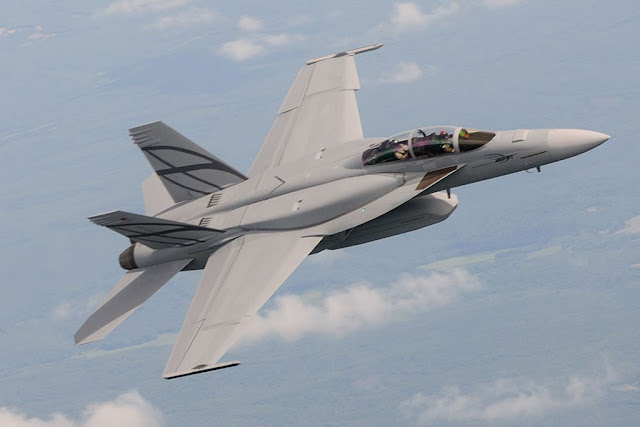Super Hornet is still alive, stronger than ever
Boeing is offering Super Hornet Block III to Finland, Switzerland, Kuwait, India and Canada.
 |
| Boeing Super Hornet Block III. |
Like the best fourth-generation fighter aircraft, Boeing's Super Hornet is now enjoying a new lease of life. Thanks to agreements reached by the U.S. aerospace giant with the U.S. Navy for 78 new Super Hornet Block III aircraft and the upgrade of the current fleet to the new standard, production lines will remain active for another 15 years. This also confirms the Navy's confidence in the type.
The Block III brings together a range of new capabilities and upgrades that makes the aircraft a considerable advance over its predecessors, not least of which is an airframe life extension from 6,000 to 10,000 hours. It provides for the addition of conformal fuel tanks (CFTs) that add around 120 nm more range. CFTs are to be part of Block III new production from the outset, as is an advanced cockpit station with a 10- by 19-inch wide-area touchscreen display. Satellite communications are also installed, along with an advanced tactical datalink. A long-wave infrared search and track sensor is added to permit passive engagements and to augment the e-scan radar.
Although the Super Hornet has struggled a lot to win the hearts of aviation enthusiasts as it has had the hard task of replacing the legendary F-14 Tomcat, it boasts features superior to the latter.
During our last visit to the USS Bush aircraft carrier, Commanding Officer CAPT Will Pennington who has more than 3,500 flight hours in the F-14 and FA-18 fighter jets, told us about the Super Hornet's great capabilities.
"It's fantastic to fly the Super Hornet, the F-14 was big, fast, carried a lot of fuel, had a great range and was very useful, but the F-18 is more relaible, easy and flexible; it is more ergonomic and has the GPS map," he said.
The latest international customers to have chosen the Super Hornet are Kuwait and Germany. The first signed a contract worth 1.5 billion dollars for the purchase of 28 aircraft in June 2018, while the second announced in April 2020 its intention to purchase thirty F/A-18F Super Hornets and fifteen EA-18G Growlers to replace part of the Luftwaffe's Tornado fleet.
Written by Matteo Sanzani
Images: Boeing, US Navy
Written by Matteo Sanzani
Images: Boeing, US Navy







No comments
All comments related to the contents of our articles are welcome. It is not allowed to post promotional messages, links to external sites, or references to activities not related to this blog.